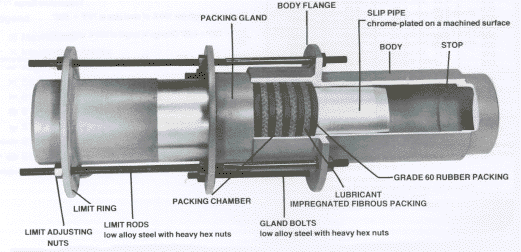


Smith-Blair Expansion Joints are carefully designed and manufactured according to specific engineering requirements. Constructed of rugged welded steel to give long, trouble free service, they are simple to install and require minimum maintenance.
Slip type expansion joints must always be installed in an accessible location to permit maintenance and adjustment.
Proper positioning of the slip pipe is extremely important when installing expansion joints. If the slip pipe is not properly positioned, the expansion joint will not have the full axial movement designed into it. Axial movement of the pipe could result in damage to the pipeline, expansion joint or other equipment.
When dividing a pipeline into independent expanding and contracting segments by the placement of main anchors and intermediate anchors, it is desirable to make the segments approximately the same length, if possible. This will requirer all expansion joints to accommodate approximately the same amount of axial movement and simplify ordering, design and installation.
When laying long runs of pipe and installing the expansion joints later, the practice of leaving random gaps in the line for the expansion joints should NOT BE PERMITTED. A space in the pipeline the exact length for proper adjustment of the expansion joint should be provided at the time of installation.
When expansion joints are installed in the pipeline by welding, care must be taken that no welding slag gets on the slip pipe.
Before applying hydrostatic tests on a piping system with expansion joints, be sure all of the anchors and alignment guides are installed.
Expansion joints installed below ground must be in a vault. Earth backfill
compacted around the expansion joint will prevent it from functioning properly.
Return to Main Page